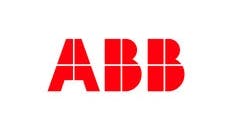Ontario First Nation Sets Clean Energy Milestone with Microgrid
Gull Bay First Nation and utility partner Ontario Power Generation (OPG) set a clean energy milestone for off-grid Canadian indigenous communities recently with the commissioning of a hybrid solar-plus-storage microgrid.
The $6 million system has the capacity to meet the entire community’s electricity needs for 11-12 hours per day when running at full capacity and is expected to offset 130,000 liters of diesel-fuel consumption per year, about 25% of the annual total, with no increase in electricity bills.
The microgrid will serve some 375 residents, or just under 100 houses, and about 13 community buildings and facilities, including the Kiashke Zaaging Anishinaabek First Nation government office, community health and recreation centers, a volunteer fire station, and a water transfer and sewage station, according to A.J. Esquega, projects coordinator for Gull Bay First Nation’s Mashkawiziiwin Energy. A diesel-fueled plant owned by utility Hydro One serves as a backup.
“In the last few weeks as we went into full operations we have already reduced over 12,000 liters of diesel with clean, renewable solar power. A true gift from the Creator,” said Wilfred King, chief of Kiashke Zaaging Anishinaabek – Gull Bay First Nation.
Known as the Giizis Energy Solar Storage Micro Grid, the project is 100% community owned and is expected to result in “community-centered economic development and jobs; community infrastructure improvement, a healthier community; diesel and greenhouse gas reduction, and a stronger Kiashke Zaaging Anishinaabek community,” King said.
Messaging and outreach key to microgrid success
Mashkawiziiwin Energy and OPG worked closely over 2 1/2 years on the project with Hydro One Remote and ABB, which provided the lithium-ion battery energy storage and control system. The microgrid is OPG’s fifth development project with an indigenous community and first distribution-scale solar installation.
Public outreach and community support was key to the project’s success. The message that the microgrid would result in less air, land, water and noise pollution without increasing consumers’ electricity bills went over well with community members, Esquega explained.
“The beauty of the microgrid and computerized controller is that it all works on its own, with very minimal overview,” Esquega said in an interview. The community council is employing a systems operator to carry out daily checks and monitoring, as well as communicate with the relevant technicians or service providers when problems arise, he said.
The microgrid automatically shuts down when the battery energy storage systems reaches 80% of full capacity and automatically shuts off when the charge drops to 25%. Transitioning from the microgrid to the back-up diesel generation, or vice-versa, takes about 18 minutes to progressively switch circuits and power resources from the diesel generation system to the solar-storage system. It can do so without any service interruption or electricity flicker, Esquega said.
The Ontario and federal Canadian government provided funding for the project, as did some private investors. Gull Bay First Nation owns and operates the microgrid. The First Nation governing council will cover costs to operate and maintain the system with revenue from microgrid electricity sales.
The First Nation is also looking for additional sources of microgrid services revenue that could help fund a community clean energy plan that would completely eliminate the community’s use of diesel fuel for power generation. That could include providing energy efficiency or demand-side management services, for example, according to Esquega.
Guide for other First Nation communities
The First Nation community is offsetting and eliminating 25% of its diesel-fuel power consumption at present, but 100% during daylight hours, Esquega said. The community saved about 13,000 liters of diesel fuel purchases during the microgrid’s test phase, which lasted from March to the beginning of August.
“This is a big step for us, one that takes us towards a clean energy future. It’s a source of pride for the community and the Chief of Council,” Esquega said. It’s also one that the community is working to share with other First Nation communities interested in making the transition to a cleaner, healthier energy future, he added.
The First Nation council and community microgrid services provider conducted energy information workshops to educate residents about the workings of the solar-plus-storage microgrid and its development, as well as simple ways to conserve energy at home and at work with LED lighting and power bars, as well as simply turning off lights when spaces aren’t occupied. That extended to home energy audits, entertainment events with a clean energy and energy efficiency themes, publishing a newsletter and creating a Facebook page.
Residents experienced a sense of “eeriness” when project partners first switched over to the solar-storage microgrid, he added. “Shoot, our power’s out now; we have to get the power back on. Then we remembered that we have a solar energy system…It’s still kind of a shock sitting here. It’s quiet; you don’t hear the diesel generators and the lights are still on,” Esquega said.
Track news about First Nation microgrid projects. Subscribe to the free Microgrid Knowledge newsletter.








